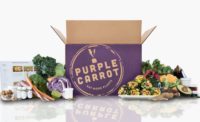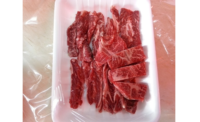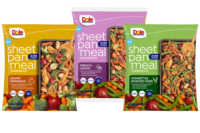Study Reveals the Most (and least) Wasteful Meal Kit Companies

Image courtesy of US Packaging and Wrapping
The global meal kit industry witnessed a significant boom in response to growing consumer demand for healthy and convenient meals at affordable prices — with the industry expected to be worth $11.6 billion in the U.S. alone.
With household food waste accounting for around 27 million tons of waste per year, meal kits are growing in popularity with the idea they can be used to reduce food waste and even carbon footprints. However, while these meal kit services are helping reduce food waste, these single-serve meals create a different problem of packaging waste.
With this in mind, US Packaging and Wrapping ordered three meals each from four leading delivery companies to find out which meal kits are the most (or least) wasteful.
To ensure the results were as accurate as possible, the company says it made sure to choose three types of dishes (meat, pasta and rice) and all the recipes chosen had a similar number of ingredients.
Four key eco-conscious categories were analyzed, including the percentage of plastic packets, number of packets per ingredient, empty box space and percentage of recycled materials.
Of the four companies analyzed, Home Chef is named the most wasteful for its meal kits, with an overall score of 7/10. It scored poorly in three of the four categories including percentage of plastic packets (90%), number of packets per ingredient (2.38) and percentage of recycled materials (19%).
Following closely, EveryPlate (6.4), Hello Fresh (5.3) and Blue Apron (2.5) complete the four companies analyzed to reveal which were deemed the most wasteful meal kit service.
Home Chef scored relatively well in the empty box space category, as the main box only had 3 in. of empty space, just beaten by Blue Apron with only 2.5 in. of empty space at the top, highlighting the company’s efforts to ensure the packaging is filled to maximum capacity.
Despite high levels of plastic pollution globally, the main form of packaging used in all boxes across all four companies is plastic. In particular, Home Chef uses 90% of its packaging as plastic, this amounted to 56 packets across the three meals. Whereas Hello Fresh used the least amount of plastic (66%), as it separated meals in recyclable kraft bags.
Another way businesses can reduce their environmental impact is by including recyclable material where possible. However, after analyzing the meal kits, none of the companies had more than 20% of recyclable materials in their packaging except for Blue Apron, which had 50%.
Astonishingly, Hello Fresh and EveryPlate had only 9% and 3% of recycled materials used. In fact, EveryPlate only had one piece of recyclable material across all three meals in its box.
The study says that some of the ways in which meal kit companies can cut the amount of waste they produce are:
- Offer a variety of portion sizes depending on the size of the order so consumers are receiving the correct amount of food and minimizing waste
- Meals with similar ingredients could be packaged together to minimize the number of ingredients needed to increase its plant-based food offerings
- Continue to reduce the amount plastic packaging used and increase the number of recycled materials instead
Charles Haverfield, packaging expert at US Packaging and Wrapping says, “Tailor-made meal kits not only save waste by providing people with precise amounts of fresh ingredients for chosen recipes, meaning leftovers are minimized and less food goes off before people have a chance to use it, but they’re also helping even the least talented cooks make fresh, home-cooked meals.
“However, the packaging is killer if it’s single-use and thrown away, meaning all environmental benefits are lost. If meal-kit companies can improve on the packaging categories listed in our study, then we could start to see greater benefits for this service.”
To view the full study, click here.Looking for a reprint of this article?
From high-res PDFs to custom plaques, order your copy today!






